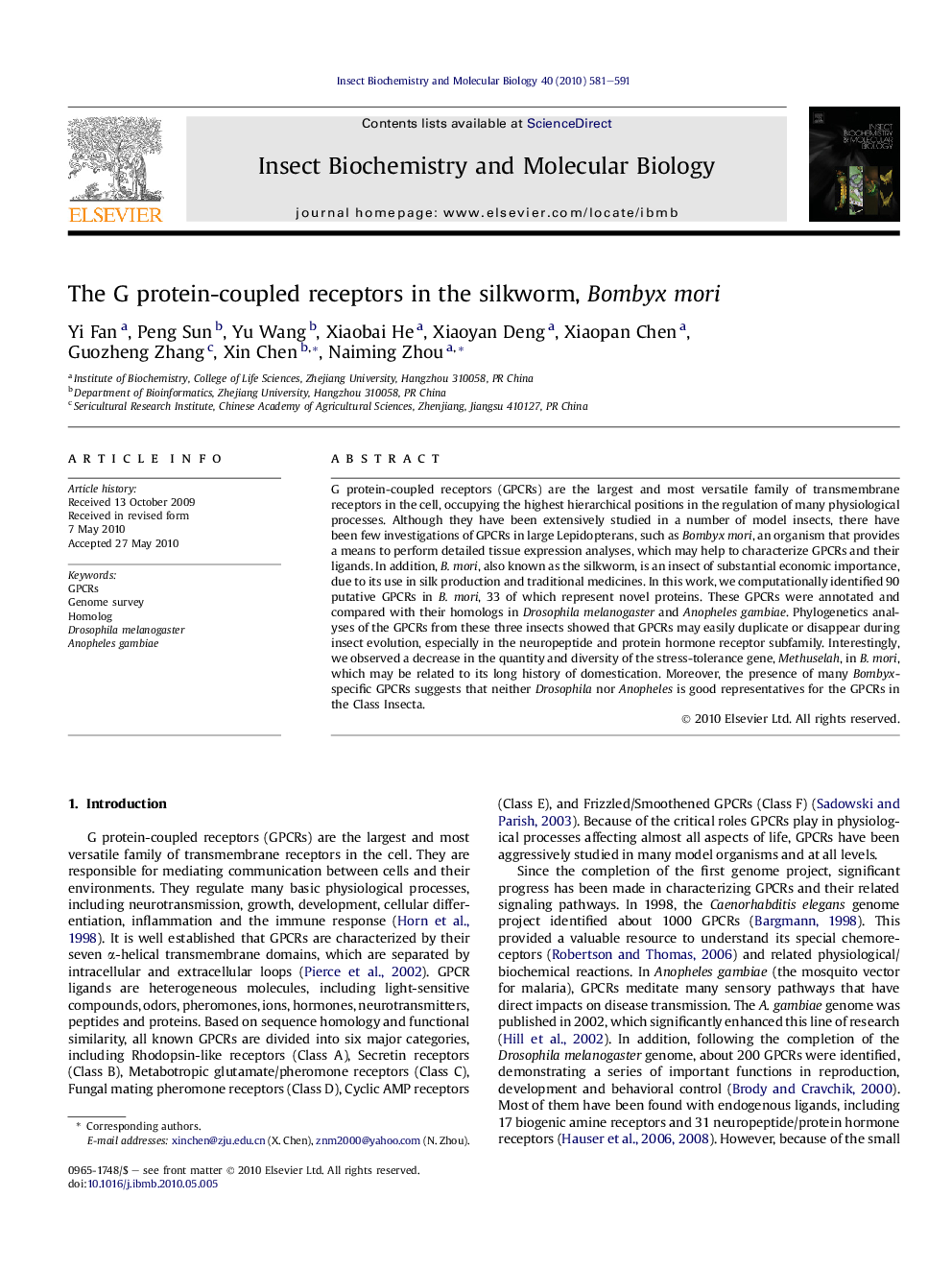| Article ID | Journal | Published Year | Pages | File Type |
|---|---|---|---|---|
| 1982527 | Insect Biochemistry and Molecular Biology | 2010 | 11 Pages |
G protein-coupled receptors (GPCRs) are the largest and most versatile family of transmembrane receptors in the cell, occupying the highest hierarchical positions in the regulation of many physiological processes. Although they have been extensively studied in a number of model insects, there have been few investigations of GPCRs in large Lepidopterans, such as Bombyx mori, an organism that provides a means to perform detailed tissue expression analyses, which may help to characterize GPCRs and their ligands. In addition, B. mori, also known as the silkworm, is an insect of substantial economic importance, due to its use in silk production and traditional medicines. In this work, we computationally identified 90 putative GPCRs in B. mori, 33 of which represent novel proteins. These GPCRs were annotated and compared with their homologs in Drosophila melanogaster and Anopheles gambiae. Phylogenetics analyses of the GPCRs from these three insects showed that GPCRs may easily duplicate or disappear during insect evolution, especially in the neuropeptide and protein hormone receptor subfamily. Interestingly, we observed a decrease in the quantity and diversity of the stress-tolerance gene, Methuselah, in B. mori, which may be related to its long history of domestication. Moreover, the presence of many Bombyx-specific GPCRs suggests that neither Drosophila nor Anopheles is good representatives for the GPCRs in the Class Insecta.
